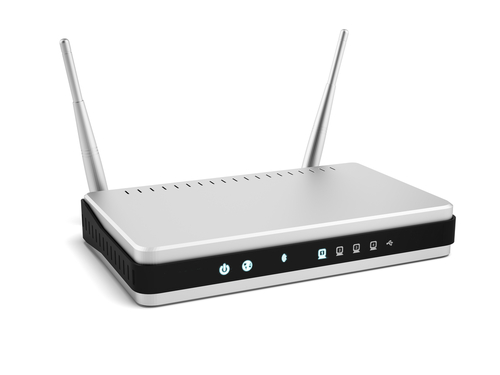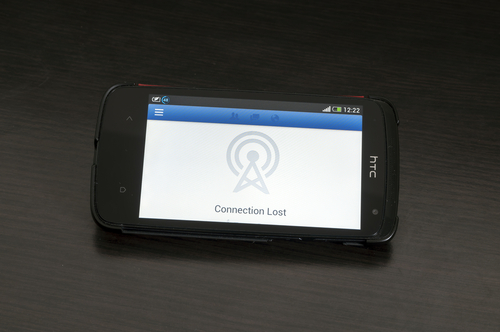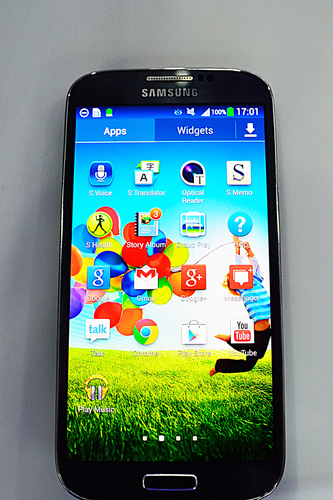February 20th, 2014

Nearly every day, news stories are written about security vulnerabilities being patched or exploited. Most users believe that if they keep their applications updated, they’ll be safe from attacks. While it’s true that regular updates do eliminate some vulnerabilities in applications, they don’t take the possibility of a successful attack away completely. As Mark Wilson reports for Beta News, security firm Cenzic recently published its Application Vulnerability Trends Report and found that 96-percent of all applications contain security issues.
Not only does nearly every application being used have security flaws, but also the media number of flaws per application is 14. So, it’s likely that even up to date, well-patched applications still have vulnerabilities that would allow for successful attacks.
The good news is that this grim news is actually an improvement over last year’s report. In 2012, 99-percent of tested apps displayed security flaws. However, the media number of flaws per application was 13.
Mobile users specifically also have the concerns of what downloaded apps are allowed to access. Cenzic found that 80-percent of mobile apps had excessive privileges, which means they’re able to access data they shouldn’t need or are capable of controlling features they shouldn’t be able to.
The takeaway for users is that even a well-secured network, computer or mobile device can be undone by an insecure application. For example, many of the attacks on Apple devices stem from apps with vulnerabilities that have been added to an otherwise secure environment. These vulnerabilities open the door for attackers to access data and remotely control devices.
For businesses, this means that a renewed investment in security is likely needed. If applications your company regularly relies on are likely to contain security vulnerabilities, data needs to be protected in other ways, like encryption.
This also introduces concerns about employees bringing their own devices into the workplace. Apps on those devices that aren’t even used for business could contain flaws that allow attackers onto your network.
To find out how to better protect your data, call Geek Rescue at 918-369-4335.
February 19th, 2014

The year 2001 may not seem that long ago to some, but for Microsoft, it was an eternity ago. Windows XP launched in October of 2001 and since then, Microsoft has moved on to three more operating systems, Windows Vista, 7 and 8. In April, support for Windows XP will end and users will be left to choose between upgrading to a newer operating system, or using one with no hope of bug fixes or security patches. At Information Week, Jeff Bertolucci published a list of what XP users need to know ahead of the April expiration date and what they should be thinking about.
- Windows XP will still run
Just because Microsoft will no longer support XP, it doesn’t mean that your computer running XP will no longer work. The only change will be that Microsoft won’t be releasing updates. That means newer devices won’t be compatible with XP machines. It also means you’ll become more vulnerable to attacks as vulnerabilities are uncovered but unpatched.
- Office and Exchange 2003 also expiring
Lost in the news of XP’s end of support is the end of support for both Office 2003 and Exchange 2003. Online content, security updates and bug fixes will no longer be released for these popular applications after April 8th. If you’re unsure of what version of Office you’re using, go to the ‘Help’ menu in Microsoft Word and select “About Microsoft Office Word”.
- Security Essentials gets a reprieve
Microsoft Security Essentials is far from a complete malware protection program, but Microsoft won’t be continuing updates for Security Essentials on XP until July of 2015. That, in addition to an up to date antivirus program, will help keep you more secure even after the XP updates cease.
- Windows 7 features Windows XP mode
If you decide to update to Windows 7, there’s an XP mode to help make the transition easier. This allows you to run applications designed for XP effectively. A separate window will open on the desktop, which will be a fully functional version of XP. There’s one catch, however. XP mode also will stop getting support in April. It will still be available, but it won’t be getting updates and patches.
- Compatibility troubleshooting
The hesitation for many users in upgrading their operating system is a concern that programs they consistently use won’t be compatible with a newer version of Windows. Microsoft has publicly stated that they can’t guarantee that programs that ran on XP will work in Windows 7 or 8. There is, however, a troubleshooting tool to help you adjust an application’s settings to make it work. To access the tool, right click on the program’s icon and select “troubleshoot compatibility”.
Hard drive space has increased exponentially since the days when Windows XP ruled the world. Now, Windows 8.1 requires at least 16 GB of free space for 32-bit systems and 20 GB of free space for 64-bit systems. This free space is allocated for updates. If you’re planning to upgrade from XP to 8.1, you’ll have to make sure you have enough space on your hard drive to make it work.
If you need help upgrading your personal computer or an entire office of XP machines, or if you have computer issues that extend beyond an out-dated operating system, call Geek Rescue at 918-369-4335.
February 19th, 2014

Over the past few months, wireless routers have become more of a target for attacks and more vulnerabilities have surfaced. Attacks on routers can be extremely costly as hackers could gain access to any data you are sending out or receiving and could even gain access to information stored on your hard drive. Seth Rosenblatt of CNet reports that vulnerabilities in Asus routers have put those users particularly at risk.
There are nearly a dozen Asus routers vulnerable to active attacks. Hackers are able to exploit this vulnerability to gain access to access data stored on networked drives. If you’re using the cloud storage options included with Asus routers, there’s a good chance that criminals could gain access to anything stored there.
The vulnerability was first discovered more than six-months ago, but Asus has been silent about a fix. Now, after evidence of attackers exploiting the security flaw have surfaced, Asus has released a firmware update fix. There’s still one problem, however. The update isn’t being automatically sent to all affected browsers. Instead, users have to visit the Asus site themselves and manually install the fix.
Since Asus hasn’t done a good job publicizing the availability of this update, many users are still vulnerable to attacks.
Experts are speaking out about the improvements needed from manufacturers in order to keep routers safe from attacks. Because there is so much to gain by launching an attack against a router, companies need to do a better job making security a priority and getting their products patched before hackers have a chance to exploit vulnerabilities.
If you’re router has been attacked or your computer has been infected with malware, call Geek Rescue at 918-369-4335.
February 18th, 2014

A broken screen on your smartphone is frustrating and can be a costly fix. Unlike other damage to your phone, a broken screen often means your phone is completely inoperable. As Shawn Knight reports for TechSpot, HTC smartphone owners will soon be protected when their screens shatter.
HTC that they will replace broken smartphone screens at no additional cost to their users. There are some catches, however.
Most notably, this insurance policy only lasts for 6-months from the time you purchase your phone. With many users keeping their smartphones for about 2-years, this leaves a lot of time uncovered.
Also, this is not a retroactive policy. Anyone who bought an HTC smartphone before today won’t be able to get a free fix for their broken screen. In fact, at the moment the offer is only good for HTC One, One Mini and One Max smartphone purchased today or later.
In addition to the coverage for broken screens, HTC’s new program, called HTC Advantage, also outlines how long users will receive support for their chosen smartphones. For example, those with an HTC One will receive updates and patches until 2016. There’s also more cloud storage available.
If you’re planning to buy a new smartphone soon, this news may sway your decision. Unfortunately, there have been no reports that similar programs are in the works for other major providers.
If your smartphone sustains any type of damage that isn’t covered by insurance, Geek Rescue has you covered. Bring your broken devices in to one of our locations or call us at 918-369-4335.
February 18th, 2014

Google Chrome is the most used web browser around, but many users don’t know half of its capabilities. Howard Wen of CIO looked specifically at the tools available for Chrome’s tabs that most don’t know about. Here’s a list of some helpful tab tricks and extensions.
It may not happen everyday, but there are times when you find yourself constantly refreshing a page. For those times, Chrome can help with the addition of an extension. There are multiple options, but all allow you to set a timer then sit back and let Chrome refresh regularly on its own.
Many Windows users already have the option of splitting the screen between two windows, but with the Split Screen extension for Chrome, you can display two websites in the same tab. There are multiple reasons why you’d want to or need to use split screen, but there’s one drawback. You have to enter the URLs of the sites you want to display manually, so there’s no option to quickly load favorites.
In the same vein as split screen is this extension that allows for even more customization. Tab Resize allows you to rearrange and resize up to four different Chrome windows so they all display on your screen at the same time. You can use the options that come with the extension, or make your own template for where tabs should go and how they should be sized.
The problem many of us encounter when using tabs to browse is that you end up with so many tabs open that it begins to hurt your systems performance. More tabs require more memory, which can eventually make your computer sluggish. To solve this problem, The Great Suspender, and other similar extensions, allows you to automatically suspend a tab that you haven’t used in awhile. This way, the tab won’t be using memory, but can be easily re-opened when you need it.
If you’re forced to abandon a project before you’re finished, but need to save all of your open tabs so you can pick back up later, you need the Project Tab Manager extension. This allows you to save all the open tabs in one click as bookmarks under a single folder that you name. There are similar extensions that save groups of tabs together so you can return and open all of them at once, or one at a time.
Chrome extensions add exceptional capabilities to the browser, but many users aren’t aware of them and don’t use them. It’s worth your time to head the the Google Web Store and look around for potentially helpful apps and extensions.
If you’re having issues with your computer or internet that an extension doesn’t solve, call Geek Rescue at 918-369-4335.
February 17th, 2014

It’s become well-known that more threats exist for Android users than exist for users of Apple devices. One of the reasons that malware often targets the Android operating system is because of the relative insecurity of the app store, Google Play. Malicious apps have repeatedly infiltrated Google Play and infected users. According to a post at GMA News, a number of malicious apps are currently available through the app store and they’ve already infected more than 300-thousand users.
Though the names of specific apps aren’t named, there are believed to be a number of apps responsible for malware infections. These apps typically pose as legitimate versions of other apps, or as different versions of popular, or trendy, apps. Most recently, the game Flappy Bird, which was taken out of app stores, has spawned a number of malicious copycats.
When a user mistakenly downloads one of these malicious apps, it steals the users phone number and uses it to sign up for a premium SMS service. This ends with additional fees being included on a user’s monthly bill. The attacker likely receives some sort of commission for bringing additional users to the service.
Part of this process involves the malware intercepting messages sent to a user’s smartphone and sending messages without the user’s knowledge. Because the premium service needs confirmation before it can begin to charge you, the malware must intercept the confirmation message containing a PIN, then send a message back with that PIN.
To gain access to a user’s phone number, the malware uses a vulnerability in the popular messaging app, WhatsApp. Even though users without WhatsApp could become download a malicious app and be infected, it’s not clear if the malware would have the same capabilities.
To avoid downloading an app that will infect your smartphone, be sure to carefully read the permissions the app requires. These malicious apps clearly state in their permissions that they read text messages and need a connection to the internet. While some apps needs those permissions legitimately, most do not. If an app asks for permissions they shouldn’t need, it’s best to avoid downloading.
If your smartphone is infected by malware, bring it to Geek Rescue or call us at 918-369-4335.
February 17th, 2014

A recently discovered form of malware is being called “the most sophisticated malware yet” by experts. As Timothy B. Lee reports for The Washington Post, this threat is capable of infecting almost anyone and of stealing almost anything.
Called Careto, this malware is actually a suite of tools used for collecting data from infected users. This highly targeted attack starts as a phishing scam. An email made to look like it’s from a major publication is sent to a user. Those that click on the provided link are taken to a malicious website that scans the user’s computer to find vulnerabilities.
Careto is capable of infecting a number of operating systems. Windows, OS X and Linux users are all at risk. Experts believe that mobile versions of the malware that target iOS and Android will be developed soon.
It’s when the malware has infected a user that the real trouble starts. Nearly everything a user does can be recorded by Careto. Network traffic is intercepted, keystrokes are logged, screen captures are taken, Skype conversations are monitored and all file operations are tracked. The malware can also sniff out encryption keys stored on a device.
The nature of the malware also allows for software or plug-ins to be added easily. This means additional capabilities are being added to steal other data or to add more features.
Because Careto is so complex, it’s difficult to detect, even if you’re running an up to date antivirus or anti-malware program. The best way to avoid infection is to be extremely cautious regarding links in emails. If a link is sent to you, it’s better to go to the site directly, rather than following the link. This eliminates the possibility that you’re being sent to a fake, spoofed, site.
If your computer is infected with malware, bring it to Geek Rescue or call us at 918-369-4335.
February 14th, 2014

There are a number of advantages to becoming a more mobile business. Employees are able to access data from virtually anywhere, which can make them more productive and give them access to vital information when meeting with clients. It’s also much easier for them to collaborate with others. There’s also the bring your own device trend that allows employees to integrate their own mobile devices into their work. All of these allow for more productivity and connectivity, but they also all introduce new security concerns. At Network World, Ed Tittel lists some best practices all business owners should be familiar with for dealing with mobile security.
With more smartphones being used worldwide and more valuable data being accessed with them, it stands to reason that they’re becoming a more valuable target for criminals. Attacks have been observed on both iOS and Android devices. For devices that are used to access company data, you can’t afford to let them connect to your network without proper security apps in place.
Typically, mobile communications are relatively easy for hackers to intercept. That’s why most experts recommend the use of a VPN, or virtual private network, to encrypt all communications between mobile devices and company servers. Cloud storage and an employee’s smartphone may both be properly protected, but when data is transferred between them there exists a vulnerability. Using a VPN eliminates that threat.
If a device is used to access company data, it should be secured with multiple forms of authentication. It goes without saying that smartphones should require a password to unlock, but newer devices also allow for fingerprint scanning or even facial or vocal recognition. In addition, companies need to plan ahead for cases when devices are lost or stolen. The ability to remotely lock and wipe lost devices is vital to security.
Once an employee begins using their mobile device for work, they lose the ability to use whatever software they choose. There must be some consideration to the security of the device and the company’s data. Completely blocking the downloading and using of third party software is one way. Another is to allow exceptions once IT or management is informed that an individual wants to download a third party application and it’s been cleared.
If you feel that you’ve put all the necessary precautions into place, you need to test to make sure there are no penetration points you’ve missed. How else will you be sure that your company’s data is protected from threats? Regular testing allows you to find vulnerabilities before the criminals do.
For help with the security at your business, contact Geek Rescue at 918-369-4335.
February 14th, 2014

This week, in the monthly edition of Patch Tuesday, Microsoft released a number of patches to fix vulnerabilities in Internet Explorer. Just days later, Microsoft has confirmed that a zero-day exploit is being used in an active attack campaign that targets IE 9 and 10. Brandan Blevins of Search Security reports more details.
The label ‘zero-day’ categorizes attacks that exploit vulnerabilities before a patch can be created. By definition, this is a case where attackers learned of a vulnerability before the developers.
The attack is also categorized as a “watering hole attack”, which means that a specific website is being targeted in order to infect the group that typically visits that site. In this case, the U.S. Veterans of Foreign Wars’ website has its HTML code tampered with in order to load a malicious web page for visitors. When that page loads, malware is downloaded and executed on the user’s machine.
The attack exploits what’s being called the “use-after-free” bug, which allows for one byte of memory to be modified at “an arbitrary address”.
Microsoft has not announced whether a patch will be rushed out to fix the vulnerability or if users will have to wait for March’s Patch Tuesday. In the meantime, there are two options for IE 9 and 10 users.
One is a complicated fix using Microsoft’s Enhanced Mitigation Toolkit Experience.
A simpler fix is to stop using IE 9 and 10 until a patch is released. Either change browsers to Chrome, Firefox or another popular choice, or upgrade Internet Explorer to version 11.
If your computer has already been infected with malware, bring it to Geek Rescue, or call us at 918-369-4335.
February 13th, 2014

Over the summer, Instagram users were warned about fruit spam, which consisted of images of fruit being uploaded to the social network that directed users to malicious websites. As Satnam Narang of Symantec reports, fruit spam has migrated to Snapchat, but still poses a danger to users.
The problem is not quite as simple as ignoring images sent using Snapchat that feature fruit or fruit based drinks. This Snapchat spam acts similarly to many email spam problems in that it infects a user, then sends spam to all of their contacts. In the past, Snapchat spam originated from fake accounts and was much easier to spot. Now, a trusted contact may be the one spamming you.
The Snaps urge users to visit frootsnap.com or snapfroot.com for the recipes of the drinks being shown. Instead, users land on a page made to look like a GroupOn product page that offers free diet pills. Users that attempt to buy the pills are directed to yet another website, which has been associated with excessive and fraudulent charges.
Unfortunately, the root of the problem has yet to be uncovered. It does not appear that users who click on the spam images are infected themselves, which means there is some other method for accounts to be hacked and spam sent from them.
Snapchat has released a statement saying that increased security measures have been taken and advise that users change and improve the strength of their passwords. While changing passwords seems to stop the spam originating from an account, deleting the app from your device does not.
Often, these types of scams originate from a malware infection. If you have a device that’s been infected with malware, or is just acting strangely, come by Geek Rescue or call us at 918-369-4335.




















